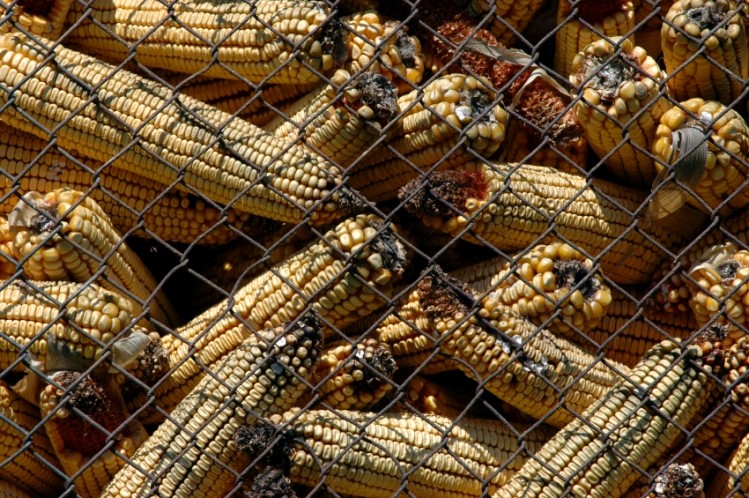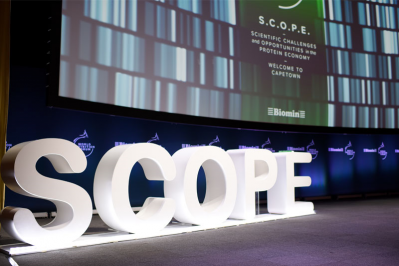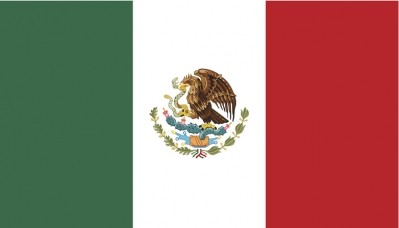Reports from Biomin World Nutritional Forum
Mycotoxins: 'The big drive is to make the diagnostics really, really user friendly'

Professor Chris Elliott, founder of Institute for Global Food Security, and chair of food safety and microbiology at Queen’s University Belfast, spoke at Biomin’s World Nutrition Forum about the increasing threat and presence of mycotoxins.
We caught up with him afterwards to hear about his team work on developing greater awareness around mycotoxin contamination in the food chain, testing, and concerns about climate change and food security.
“In terms of the growing threat of mycotoxin exposure to animals and humans, we’re becoming much more aware of the impact of climate,” he said. “It’s always one of those things that the more you look at it, the more you see there will be direct and indirect effects of changes in climate pattern.”
His research team has been finding a greater prevalence of mycotoxins in the feed ingredients they test, he said. However, work remains to educate producers to look for mycotoxins when there are production challenges.
Producers still look for a virus or bacteria when they see a reduction in animal performance, while it may be a feed toxin instead, said Elliott. “And that’s generally not looked for,” he added.
Data collection
Elliott and his colleagues continue to gather data and educate the farm and feed production sector about mycotoxins and the challenges they can generate, he said.
“Part of our outreach is to start to tell farmers, the processors, and the feed mills that this is really something that you should be aware of,” he said. “In the last two or three years, we have many more samples coming into our laboratory for analysis, linked to some performance issue, and, in many cases, what we will find is there are mycotoxins present in the feed materials.”
However, work remains to be done to indicate cause and effect in relation to animal performance, he said. “That is really about building up quite large data sets and looking for trends in performance – that’s something that we’re pretty engaged with the poultry industry in Ireland right now,” he added.
Additionally, his researchers are focused on the technological innovations that can be used to help mitigate mycotoxins, he said. "One will be around the engineering of crops to make them more resistant – I think that’s absolutely the right thing to do," he added.
“The second thing is what happens post-harvest, what are the big interventions there?” said Elliott. “What are ways to measure quickly? The sooner that you can measure, the quicker you can take important decisions," he added.
Controls post-harvest could include the addition of binders or mycotoxin deactivators, he said. "Getting information really quickly allows you to take those decisions at the appropriate times," said Elliott.
Tests for the presence of multiple mycotoxins have got faster but they can still be complicated to analyze, he said.
“The big drive is to make the diagnostics really, really user friendly,” he said. His team recently started work on a project looking at using the capabilities of a smart phone to diagnostic tests for feed safety, he added.
“You think of all the other things we use our smart phones for – why not do it for doing some analytic work?” he said. “It’s got all the components that you need in there, it’s got a fantastic camera, [and] great electronics.”
Regulatory efforts
The group is not pushing for additional regulation based only in terms of the amount of a mycotoxin present in a feed or feed ingredient, said Elliott. “If you start to reduce the regulatory limits on things, what you’ll find is more and more batches of feed materials and grains that will be deemed not suitable for animal consumption or human consumption – so you’re putting more shortages into the supply chains,” he added.
“It’s not about regulation,” said Elliott. “It’s really about trying to mitigate the presence of any of those toxins that are present.”
In Ireland, efforts have been made to establish a process where almost all imported feed and feed ingredients are tested for mycotoxins and other anti-nutrients like heavy metals or pesticides, he said. “What we’re trying to do is guarantee that when they get into our feed/food supply chain that there’s no hazards associated with them,” he added.
“That’s a scheme that we’ve introduced over the past three or four years, and now we have all the companies involved in the feed trade are part of that scheme now, and we call it the food fortress,” he said. “They all pay a little bit of money into the testing, we organize it for them, and we tell them what it [the raw material] should be tested for, so it’s done as a big cooperative and it works incredibly well.”
The scheme should be considered a way to offer risk management or collective responsibility, rather than competitive advantage, he added.












